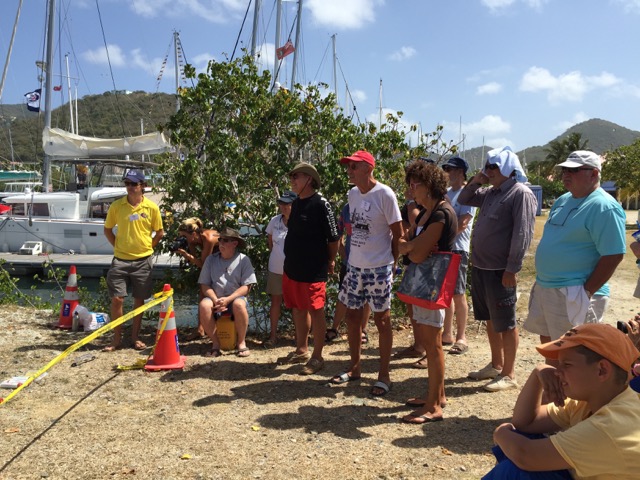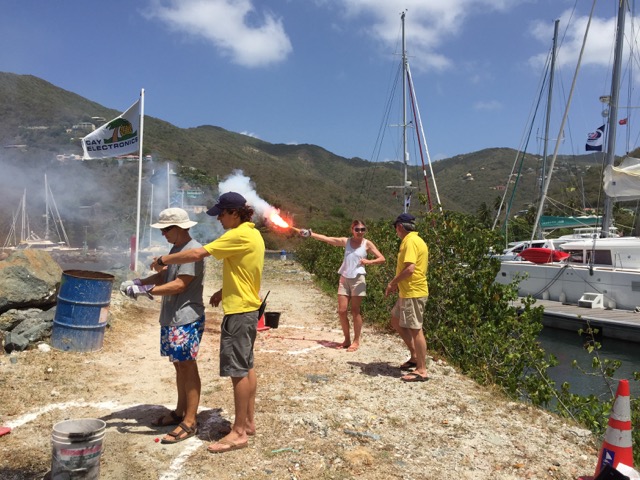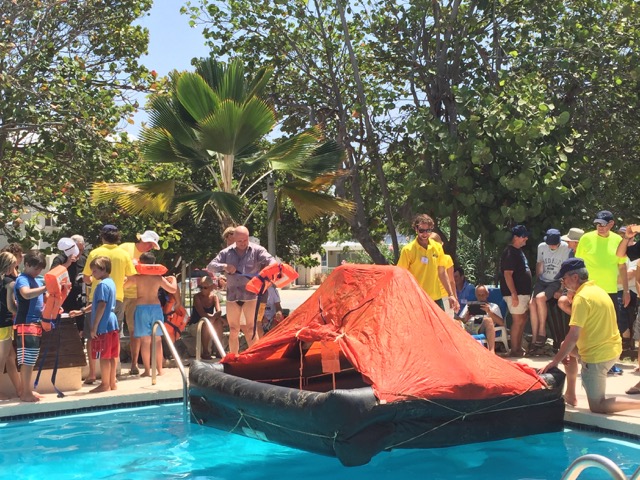After an enjoyable sundowner at Mulligans last night, it’s been a busy morning here in Tortola, with crews bringing their gas bottles along to the Rally Office to be taken away and refilled before the start on Saturday. Today is an important day on the rally event programme as it is safety day, where audience participation is the order of the day at the flare and liferaft demonstrations.

A large crowd gathered along the breakwater at the entrance to Nanny Cay marina where World Cruising Club staff carried out controlled flare demonstrations and then gave participants the chance to experience using different types of out-of-date flares, including SOLAS Floating orange smoke and SOLAS handheld. The safety demo day is an important part of World Cruising Club rallies and the team conducted a series of demonstrations where participants could join in and get hands-on experience. Many crews had not experienced the use of flares or seen them ignited before so it was great for them to get some experience with these safety devices.
WCC’s Pete Burke spoke to the group about the three main types of flare:
- Orange smoke – effective as a line of sight distress signal for daytime use only.
- Red handheld – effective as line of sight distress signal by day and night, and very bright, with a good visibility range. These are very visible from an aircraft, and burn for up to 60 seconds.
- Red parachute or rocket – capable of attracting attention in daylight for up to 10 miles, with a night-time range of up to 40 miles. The rocket launches the flare up to 300m and the flare burns for 40–60 seconds as it slowly descends under the parachute. (These were not let off today).

Demonstrations of the safe ignition of the orange smoke and the red handheld flare were provided by Lyall Burgess who then invited some participants to fire off some recently expired flares, a great practice exercise. After this safe pyrotechnic display on the water’s edge, the group headed to the pool for a liferaft demonstration.
Many participants had not been in a liferaft before and had not seen one inflated either but willing helpers jumped in and attempted a dry and wet boarding procedure and were showed how to recover the liferaft from the capsized position.
Participants enjoyed the morning of safety information and were very happy to have either their memory jogged on important safety issues or for some, learning some vital safety techniques for the first time.

This afternoon time to enjoy the beach and relax a little with a beach volleyball competition followed by the obligatory Painkiller cocktail perhaps as the sun goes down at the beach bar. Life is tough in paradise!